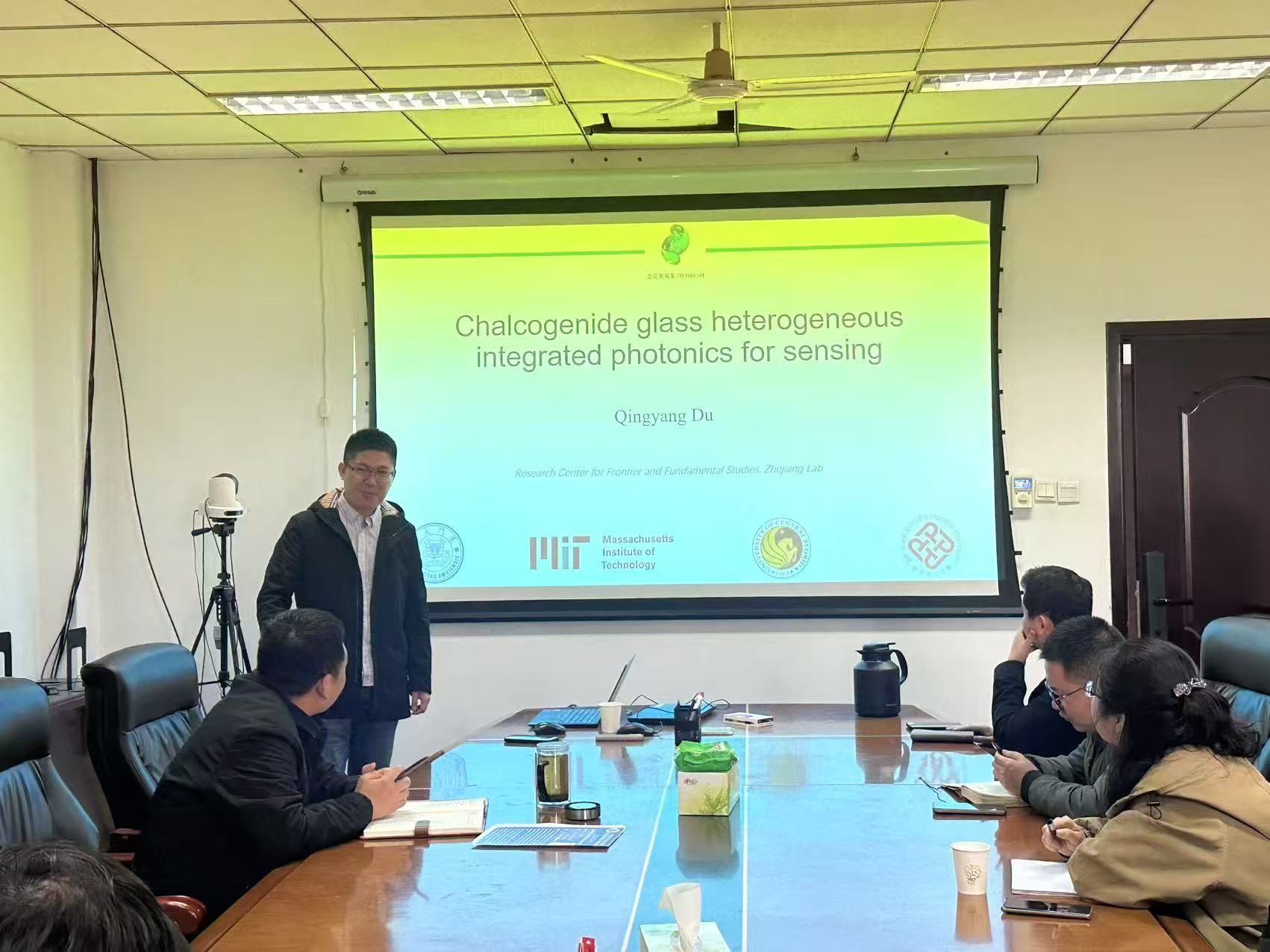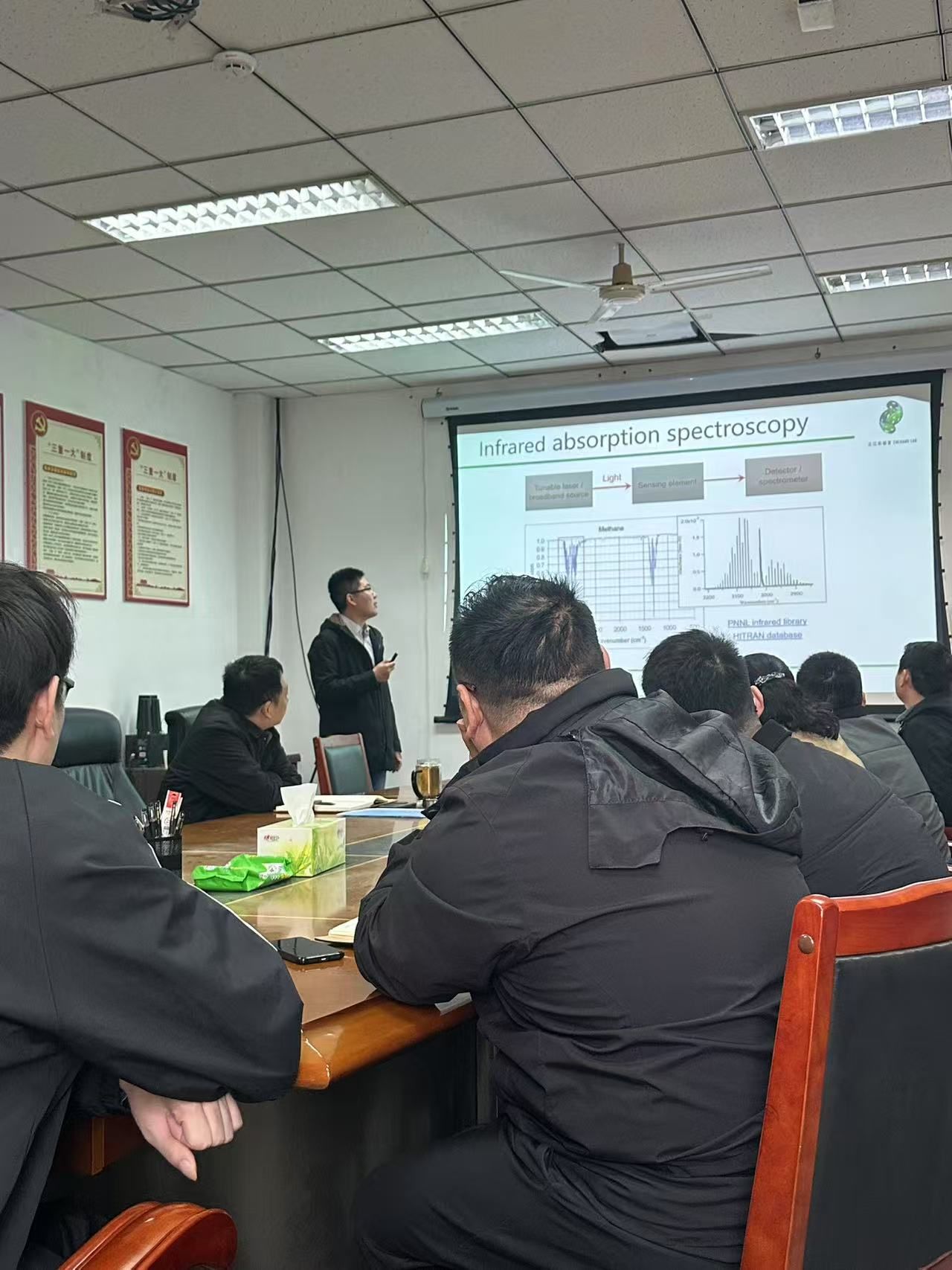On March 31, 2025, Dr. Du Qingyang, an associate researcher from ZhiJiang Laboratory, was invited to our university to conduct academic exchanges with faculty and students from the School of Future Technology and the School of Physics and Electronics. Dr. Du Qingyang presented an academic report titled "Heterogeneously Integrated Silicon-based Photonic Sensing Chips with Chalcogenide Materials." The report was chaired by Professor Chen Ke. Some faculty members and graduate students attended the seminar.
In his report, Dr. Du Qingyang focused on the principle that photonic sensing chips utilize the evanescent field of guided light to interact with target molecules for sensing. The high sensitivity and specificity of these chips give them a significant advantage over electronic chips. Chalcogenide materials are highly favored in the application of silicon-based photonic sensing chips due to their wide spectral transparency window in the infrared band, high nonlinearity coefficient, and the low-temperature heterogeneous integration technology that does not require epitaxy. The report presented the use of the nonlinear properties of chalcogenide materials to realize on-chip broadband and tunable ultrafast light sources, which were integrated with the chalcogenide sensing platform. Absorption-based direct detection sensing was employed to achieve on-chip detection of chemical molecules. Building on this, an indirect photothermal sensing scheme was further developed. By using suspended waveguides and leveraging the high sensitivity of photothermal sensing, molecular detection at the sub-ppm level was realized.
Speaker Biography:
Du Qingyang is an Associate Researcher at ZhiJiang Laboratory. He obtained his Ph.D. from the Massachusetts Institute of Technology (MIT) in 2018 and subsequently conducted postdoctoral research at MIT. In 2022, he joined ZhiJiang Laboratory full-time and received the Zhejiang Province Overseas High-Level Talent Introduction Program. He has been honored as an Emerging Leader in Applied Physics by IOP Publishing and recognized as one of the world's top 2% scientists. His research primarily focuses on the integration of chalcogenide, magneto-optical oxides, and other functional materials into silicon photonic chips, empowering photonic chips for applications in chemical sensing, communication, and computing. He serves as a Young Editorial Board member of the Chinese Laser Press. To date, he has published over 50 papers in internationally renowned journals such as Nat. Electron., Optica, and PhotoniX.

